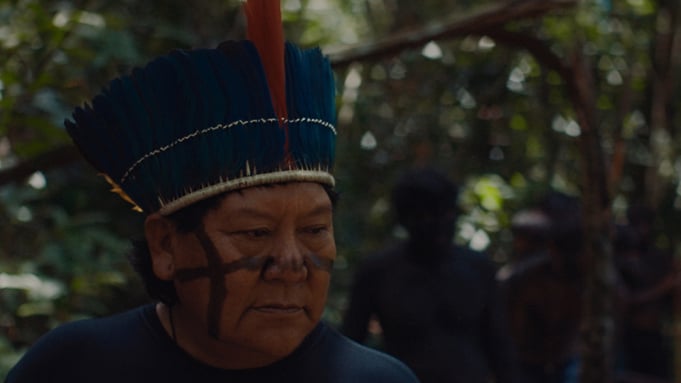“Just in our backwoods would you be able to rest in harmony,” says Davi Kopenawa, a shaman and senior of the Yanomami people group — the native populace of the rainforest landscape on the Brazilian-Venezuelan line. His words, captivating as they sound, aren’t a solicitation to guests, yet an admonition to his own. As the Yanomami’s unaltered, natural lifestyle rivals the bait of the created white world across the waterway, Kopenawa and his companions will say what they should to deter more youthful ages from wandering endlessly, and to keep their kid culture flawless. There’s more than stuffy traditionalism affecting everything here, in any case. History has terribly demonstrated that the white man isn’t simply a danger to the Yanomamis’ aggregate soul, yet their individual bodies.
Luiz Bolognesi’s enlightening, wrapping narrative “The Last Backwoods” makes these stakes understood, and prizes Kopenawa’s perspective over that of the amazed spectator. Maybe than taking a disconnected anthropological visit through the local area, Bolognesi allows the Yanomami to introduce themselves in their own words and on their own terms, consequently breathing life into everything from their eating times to their folklore.
At only 74 minutes, the film could bear to be more broad, testing the individual points of view and inside existences of a greater number of people than just Kopenawa — the clan’s first open representative, and furthermore the doc’s co-essayist. Be that as it may, this is still rewardingly upright filmmaking, outwardly and sonically rich without depending on void exoticist scene. Coordinating with the profile of Bolognesi’s comparatively themed 2018 doc “Ex-Shaman,” the new film appeared at Berlin, with sound expert circulation prone to follow.
At the start of the film, we experience Kopenawa as he plans to travel to the city, to convey a location with regards to his kin and their current circumstance — a domain more than once compromised over the course of the years by infringing gold miners. The Haximu slaughter of 1993, which saw 16 Yanomami executed by miners, provoked expanded legislative insurances for the clan, however we’re told a large number of those have fallen away under the organization of Jair Bolsanaro. Kopenawa, along these lines, is in no state of mind to grin and bargain: “I would prefer not to go there bringing happy food and customary moving,” he rage in front of his excursion. “I should show them our perspective.”
It’s an assertion that likewise demonstrates informational to the watcher. Bolognesi and cinematographer Pedro J. Marquez drench us in the new sights, sounds and ceremonies of the Yanomami, yet with an accentuation on both functional daily practice and profound conviction. One scene of gator butchery is no less legal for being shot in dazzling, glimmering firelight. That it’s circled back to a clarification of the rubble found in the monster’s stomach focuses to the clan’s place in a bigger environment — a model again imperiled by attacking miners, whose mining brings about harmful mercury openness, “delivering the smoke of illness.”
“The Last Woods” is most convincing when it’s quietly focused on such items of common sense, however they’re countered by a level of more built fiction and caprice. Utilizing the tribespeople as entertainers, Bolognesi performs their key creation account, a vivid section of folklore including mermaid sentiment, brotherly selling out and male impregnation. This equal gadget doesn’t mix all that smoothly with the film’s more observational film, as the wild subtleties of the story arise somewhat more plainly than its more extensive importance in the clan’s conviction framework. However the producers’ commitment of their subjects as dynamic narrators by their own doing is propping regardless; the legends here feels direct, not sifted through numerous mediators.
In Kopenawa, in the interim, “The Last Woodland” has both a grave, tough hero and an unfaltering good compass: So unequivocally does he slant the film as he would prefer of seeing that, when he makes his climactic outing across the stream, it’s the metropolitan world that feels disorientingly “other.” Bolognesi and Marquez license themselves an impeccably arranged shot of Kopenawa in his ordinary full ancestral dress — not, it ought to be pushed, a “ensemble” — in his extravagantly named, conceals of-dark lodging as he holds on to be gotten. It’s a culture-conflict organization however incredible as it seems to be unsubtle:



